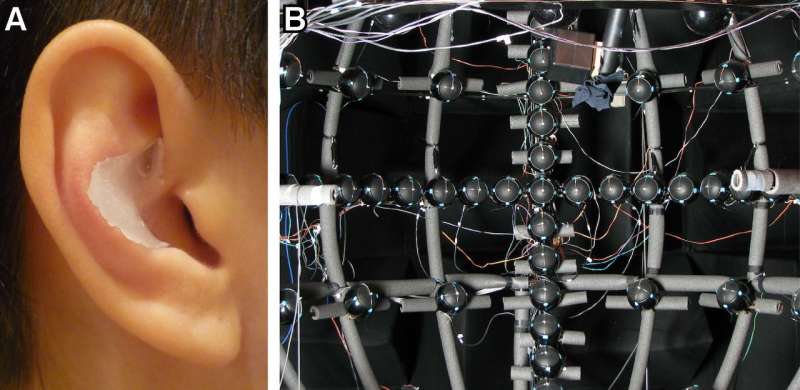How the brain represents sound elevation

Changing the shape of human participants' ears has provided new insight into how the brain represents the location of a sound source. The research, published in JNeurosci, highlights the link between sensory encoding and perception.
The ability to locate a sound in space is crucial to identify and respond to changes in the environment. Although it is understood how the brain locates a sound source horizontally, it is less clear how the brain determines how high or low on the vertical plane a sound is emitted.
Régis Trapeau and Marc Schönwiesner addressed this question in men and women by playing pink noise from a spherical array of 23 loudspeakers. An initial functional magnetic resonance imaging session using earphones, which presented the noises recorded from the loudspeakers from the participants' perspectives, showed that activation of the auditory cortex decreased with increasing elevation.
Participants were then outfitted with custom silicone molds placed outside each ear canal to disrupt their elevation perception. The researchers found different responses to the same sounds between a second and third imaging session, as participants adjusted to the ear molds, indicating that the auditory cortex does not strictly represent the acoustic environment but also incorporates perception.
More information: The encoding of sound source elevation in the human auditory cortex, JNeurosci (2018). DOI: 10.1523/JNEUROSCI.2530-17.2018















